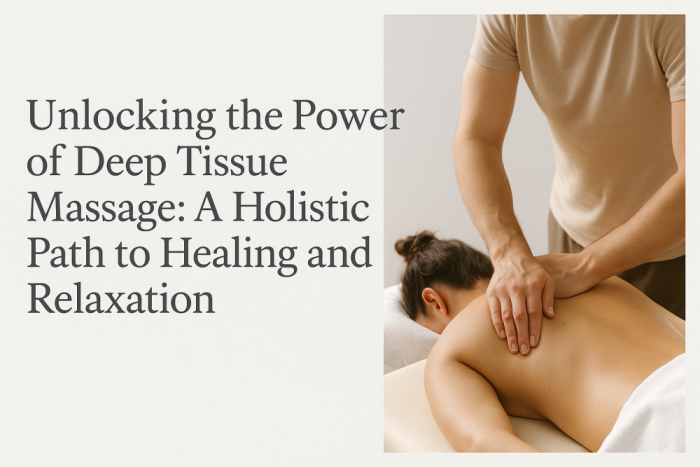Deep Tissue Massage – Benefits and What to Expect
Unlocking the Power of Deep Tissue Massage: A Holistic Path to Healing and Relaxation
Discover how this therapeutic massage technique can transform your health and wellbeing.
What is Deep Tissue Massage?
Deep tissue massage is a massage technique that focuses on the deeper layers of muscle and connective tissue. Unlike Swedish massage, which uses lighter strokes to promote relaxation, deep tissue massage involves slower, more forceful strokes and deeper finger pressure. This method is used to target knots (also known as adhesions), tight muscles, and areas of chronic tension.
It’s particularly effective for treating musculoskeletal issues such as sports injuries, back pain, fibromyalgia, and repetitive strain injuries. While it may not always feel relaxing in the traditional sense, the therapeutic benefits it provides can be profound.
The Science Behind the Technique
Deep tissue massage works by breaking down adhesions—bands of painful, rigid tissue that can disrupt circulation and limit movement. These adhesions can result from injury, poor posture, or ongoing muscle tension. By applying deep pressure to specific problem areas, massage therapists aim to relieve this discomfort and restore normal movement and function.
Additionally, deep tissue massage stimulates blood circulation and lymphatic flow, which aids in detoxifying the body and promoting healing. As oxygen and nutrients are delivered more efficiently to the muscles, the body becomes better equipped to recover from stress and injury.
Health Benefits of Deep Tissue Massage
- Pain Relief: Particularly effective for chronic back, neck, and shoulder pain, as well as conditions like sciatica and arthritis.
- Improved Posture and Flexibility: Helps lengthen and loosen muscles, correcting imbalances caused by poor posture.
- Stress Reduction: Releases physical tension, improving overall mental wellbeing.
- Rehabilitation and Injury Recovery: Accelerates healing and reduces inflammation, especially for athletes.
- Lower Blood Pressure and Heart Rate: Reduces cortisol while boosting serotonin and oxytocin.
What to Expect During a Session
During a deep tissue massage session, your therapist will begin with lighter pressure to warm up the muscles before gradually increasing intensity. Communication is key—it’s important to let your therapist know if the pressure is too much or if you’re experiencing any pain beyond tolerable discomfort.
You may experience some soreness or stiffness after your first session, particularly if your muscles are tight or knotted. This is normal and typically subsides within a day or two, especially if you stay well-hydrated and allow your body time to rest.
Who Should Avoid Deep Tissue Massage?
While beneficial for many, deep tissue massage may not be suitable for everyone. Individuals with certain medical conditions—such as blood clotting disorders, recent surgery, or osteoporosis—should consult a healthcare professional before undergoing this type of therapy. Pregnant individuals should also seek specialist prenatal massage instead.
Final Thoughts
Deep tissue massage is much more than a luxury—it’s a powerful therapeutic tool for physical and emotional wellbeing. Whether you’re dealing with chronic pain, recovering from an injury, or simply looking to improve your overall health, regular sessions can make a noticeable difference. As with any wellness practice, consistency is key, and the results are often cumulative.
So, the next time your body feels tense or fatigued, consider investing in a deep tissue massage. Your muscles— and your mind—will thank you.

